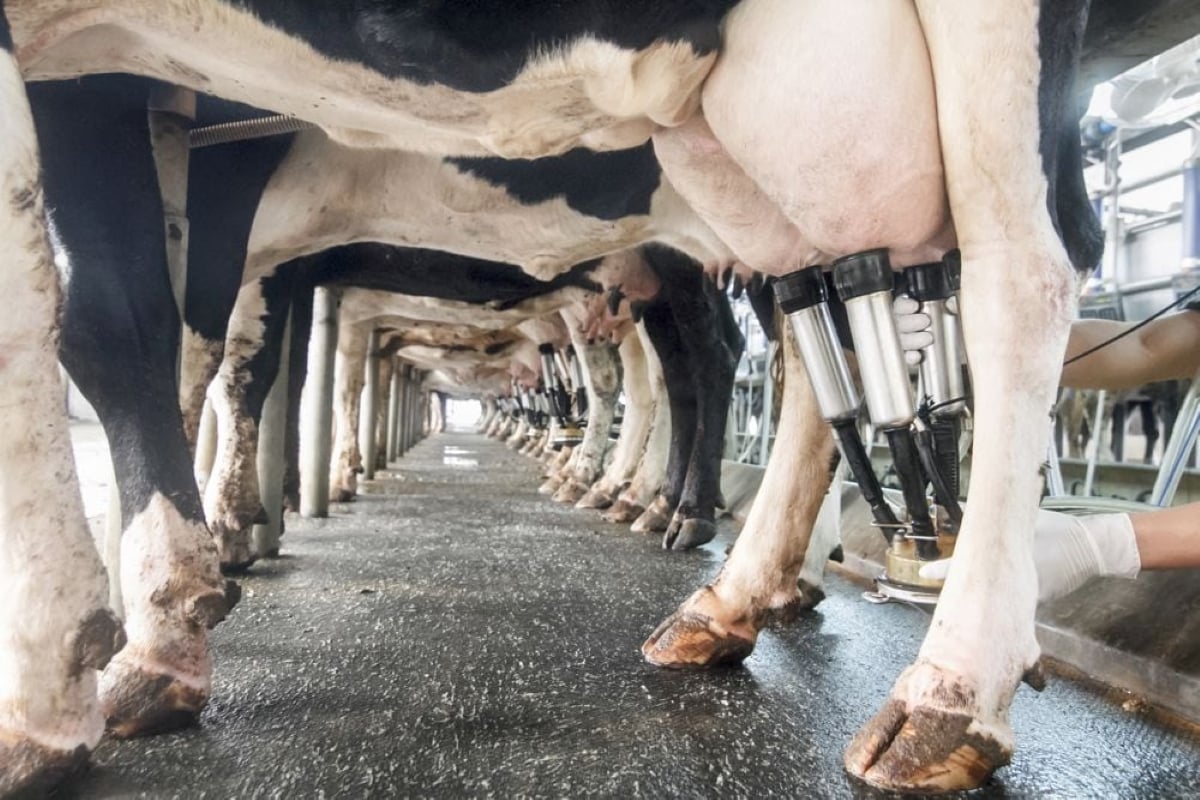There is little doubt that insecticidal seed treatments enhance early season plant development and root growth, says a University of Guelph field crop pest specialist.
Nonetheless, the larger question is more difficult to answer: is it acceptable for farmers to use insecticides as crop health products?
“It’s a very complicated issue,” Art Scaafsma said in an email.
“These (products) are not registered for this purpose and must be under the PCP (Pest Control Products) Act, but farmers see (the plant health advantage) and count on it as a secondary benefit.”
Read Also

Farm gate milk price to rise in 2026
The Canadian Dairy Commission will raise its farm gate milk price by 2.3255 per cent in February, the Crown corporation announced on Friday.
Research suggests that neonicotinoid seed treatments, such as thiamethoxam and imidacloprid, improve plant vigour and help crops cope with drought, weed pressure and other stressors.
Syngenta and Bayer, the makers of CruiserMaxx and Raxil, are promoting the plant health contributions of neonic seed treatments, which are applied to nearly all canola and corn seed in North America and a portion of soybean seeds.
Syngenta has branded the benefits from thiamethoxam as Vigor Trigger and Bayer calls its product Stress Shield.
Manitoba Agriculture pesticide specialist Jeanette Gaultier said insecticides should be used to kill pests rather than bolster crop development.
“At MAFRD (Manitoba Agriculture) we refer to that as prophylactic use. We recommend against that,” she said.
“We’re always recommending … that you’re using that pesticide when it’s needed, when the pest is present.”
Another pest management expert said it more directly: “Non-insecticidal use of insecticides is an awful idea.”
Scaafsma said the issue isn’t black or white because neonic seed treatments are useful for both pest control and plant health.
“Most corn producers in Ontario plant corn as early as possible in April ,and under these stressful conditions we have never had as uniform and vigorous stands as we have today,” he said.
Certainly (we) can’t credit neonics for the whole thing, but along with great new genetics, amazing new fungicides and an improved planter technology and seed uniformity and quality, we have achieved a leap forward in plant establishment and yield allowing us to exceed 200 bushel per acre yields consistently with replanting costs plummeting. These results were unheard of 10 years ago.”
He determined that the insecticide turned on genes in the plant, which helped the corn cope with stress.
“One of the things that get expressed when plant gets stressed … is free radicals,” Swanton said.
“This seed treatment triggers the gene to scavenge up free radicals before a lot of damage is done.”
Swanton said he approached Syngenta about the research because he wanted to understand how thiamethoxam augments plant health.
“I asked them, ‘do you guys have any idea how you actually get that growth stimulation?’ ” he said.
“The response was, ‘we have a few ideas but really we’re not sure how it happens.’ ”
Swanton said the results could lead to new modes of action and novel seed treatments.
“(It) opens a whole, fascinating area of research … if it could be possible to enhance stress tolerance,” he said.
“For me, the ‘ah ha’ moment was, ‘what if we could trigger genes every time there was a stress.’ …. That would be immensely cool in agriculture.”
Bob Elliott, an Agriculture Canada entomologist in Saskatoon and a flea beetle expert, is undecided about using insecticides as plant health products.
Research indicates that neonics stimulate plant defense responses, but neonic seed treatments don’t aid crops every year.
“In relation to soybeans, is vigour a limiting factor in its production, and are there demonstrable positive benefits year after year?” he said.
“I think it’s a key decision that all producers are facing regarding the use of seed treatments because they are being used kind of prophylactically … in the anticipation of insect damage and (abiotic stress).”
Elliott said companies are free to market products as they see fit. If insecticide seed treatments protect crops from pests and improve plant responses to stress, ads will tout those benefits.
“If there are additional peripheral effects, can they not also be mentioned?” he said.
“Then it comes down to the emphasis (in the marketing).”
Growers will ultimately decide if the hype is real and if it’s worth the extra cost, Elliott said.
“It’s a judgment call.”
In an email, Bayer Crop Science said its product promotion, including Stress Shield, emphasizes the benefits and solutions that customers are seeking.
“It’s important to understand that growers have choices to select the best product for their needs,” Bayer said. “The added benefit these products have to plant health is an important advantage that growers need to understand when making seed treatment decisions.”
Bayer added seed treatments require less active ingredient per acre than foliar or soil applied pesticides.
“Extensive product development trials show that these seed treatment products have a favourable safety profile towards beneficial insects, based on their use pattern and inherent properties,” they said. “Product stewardship is about continually rotating crops, technologies, chemistries and agronomic practices”
Studies on CruiserMaxx and plant vigour can be found at:
www.biomedcentral.com/1471-2164/15/1055
Robert.arnason@producer.com















